Done right, sequences can transform your ability to engage, nurture, convert, and retain contacts over time. Pick one or two high-value scenarios to start sequencing today and expand from there.
With a strategic mix of education, promotion, and urgency delivered consistently across channels, your sequences will boost results and grow your business.
Introduction
Sending a single promotional email or making one sales call is often not enough to capture someone’s attention and motivate them to take action. To consistently nurture leads, engage customers, and drive conversions, you need well-planned, multi-touch strategies. Enter email and sales sequences.
Sequences are pre-defined series of communications sent over time to prospects and customers. They allow you to automate your outreach at scale to increase relevancy and response rates. Think of sequences as your digital sales assistants, working behind the scenes to book more meetings and close more deals.
This guide will explore the ins and outs of constructing effective email and sales sequences. You’ll learn:
- What sequences are and how they work
- Different types of sequences and their purposes
- Best practices for creating compelling sequences
- Real sequence examples from top companies
- Actionable tips to start sequencing prospect and customer communications
Why Sequences Matter
Let’s first understand why taking a sequenced approach is so critical in modern sales and marketing.
- Sequences nurture prospects through the buyer’s journey. With multiple relevant touchpoints over time, you can educate and build trust with cold leads to make them sales-ready.
- Sequences reduce sales team workload. Automated sequences handle much of the heavy lifting of following up with every new lead. Reps can focus on hot prospects.
- Sequences increase relevancy. Sending the right message at the right time based on prospect behavior improves engagement.
- Sequences create momentum. Consistent, value-driven outreach keeps your brand top of mind and prospects engaged.
- Sequences convert customers. Personalized post-purchase sequences improve retention, cross-sells, and customer lifetime value.
- Sequences scale your revenue operations. Workflows triggered by prospect actions allow you to replicate best practices at scale.
Simply put, sequences provide the repetition and relevancy required to stand out and drive results in modern sales. Let’s now explore sequences for the two most common channels: email and sales outreach.
What is an Email Sequence?
An email sequence is a pre-defined series of emails sent out on a schedule or triggered by recipient actions. Sequences allow you to automate your marketing and guide customers through a journey with timely, relevant messaging.
Here are some of the most common types of email sequences:
- Welcome sequences. Welcome new contacts and start building a relationship.
- Onboarding sequences. Make new users self-sufficient and successful with your product after sign-up.
- Cart abandonment sequences. Encourage shoppers to complete purchases they started but didn’t finish.
- Re-engagement sequences. Bring inactive contacts back into the fold with special offers and content.
- Cross-sell / upsell sequences. Increase order value by exposing customers to complementary or higher-tier products.
- Customer winback sequences. Offer incentives to subscribers who haven’t purchased in a while to reactivate them.
- Event sequences. Promote upcoming events and webinars through prep reminders and follow-ups.
- Holiday sequences. Send seasonal offers and reinforce your brand during holidays.
- Digest sequences. Recap valuable contentperiodically to re-engage subscribers.
With a solid understanding of sequence types and their distinct purposes, let’s now explore sales sequences.
What is a Sales Sequence?
A sales sequence is a series of outreach touchpoints over time to nurture a prospect and ultimately convert them into a customer. Sales sequences allow reps to take a templated, consistent approach to moving leads through the pipeline.
Common types of sales sequence include:
- Prospecting sequences. Break the ice and pique interest with cold outreach tailored to their needs.
- Lead nurture sequences. Build trust and familiarity with valuable content for prospects actively researching solutions.
- Re-engagement sequences. Reignite past conversations that have gone cold and bring stale leads back into the funnel.
- Upsell / expansion sequences. Uncover additional opportunities within existing accounts.
- Onboarding sequences. Set the foundation for customer success and retention post sale.
- Renewal sequences. Proactively manage contract renewals and prevent churn.
- Account-based sequences. Orchestrate highly personalized outreach when selling into strategic accounts.
The right sales sequence for a given prospect will depend on factors like lead source, phase in the buyer’s journey, engagement level, and customer lifecycle stage.
Now that we’ve covered the basics of email and sales sequences, let’s explore some best practices for creating compelling sequences that convert.
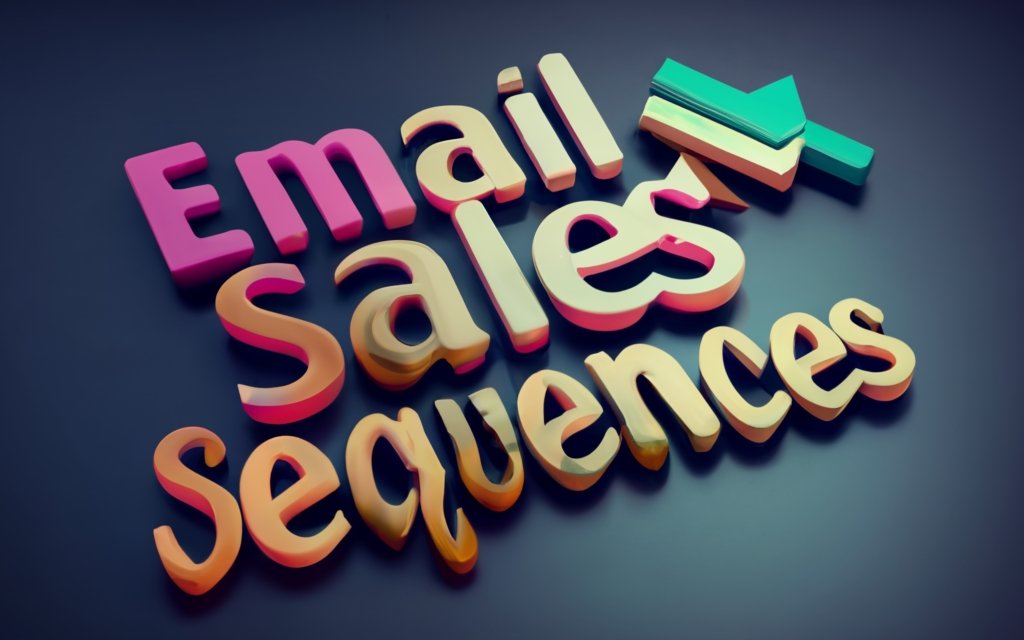
What is a Sales Sequence?
A sales sequence is a series of planned, structured communications that guides a prospect through their buyer’s journey to become a customer. Sequences allow sales teams to take an organized, consistent approach to engaging and converting leads over time.
How Do Sales Sequences Work?
Sequences are made up of multiple touches delivered via the prospect’s preferred channels over days or weeks. Each touch serves a specific purpose in progressing the prospect closer to a sale.
Here is how sequences typically work:
- Sequences are triggered automatically when a lead takes a specific action, such as downloading a piece of gated content, requesting a demo, or replying to an email.
- The prospect is automatically enrolled in the defined sequence of communications based on that trigger event.
- The sequence delivers a cadence of emails, calls, social outreach, and more to the lead over a timeframe. Each touch is spaced out to avoid overwhelming the prospect.
- With each interaction, messaging is tailored to the prospect’s needs and questions based on insights from earlier engagement.
- Sequences nurture prospects by providing valuable information and resources relevant to where they are in their buyer’s journey.
- Sequences focus on building awareness, trust, and urgency to help convert leads into sales-qualified opportunities.
- Prospects are automatically removed from a sequence if they opt out or convert to a customer.
By taking prospects through an organized progression of touches, sales teams can replicate and automate best practices at scale.
Types of Sales Sequences
There are many types of sales sequences, each designed to engage leads at different stages and convert them.
Prospecting Sequences
Prospecting sequences cold introduce your brand and pique interest with leads who have not engaged yet. Also known as “drip campaigns,” they often target contacts through lead list purchases or outbound research.
Touches in a prospecting sequence may include:
- Personalized cold emails with valuable insights
- Cold calls to confirm email receipt and offer additional resources
- LinkedIn connection requests and messages to establish rapport
- Free consultations, demos, or trials to get leads engaged
Lead Nurture Sequences
Lead nurture sequences focus on providing valuable education to contacts actively researching solutions to their problem. The goal is to familiarize leads with your brand and product and position you as a trusted advisor.
Example nurture sequence content:
- Industry guides, tip sheets, and blog content
- Case studies and customer testimonials
- Webinars and events discussing their challenges
- Product demo videos and ROI calculators
Re-Engagement Sequences
Re-engagement sequences target leads who previously engaged but have since gone cold. The goal is to restart stalled opportunities by reminding leads of prior conversations and re-establishing rapport.
Typical re-engagement sequence touches:
- A quick email or call referencing past interactions and offers
- An event invite or content offer relevant to their needs
- LinkedIn messages and connection requests
- Questions about any blockers in their buying process
Upsell / Expansion Sequences
Upsell and expansion sequences uncover additional opportunities with existing customers. Touches promote complementary or higher-tier products and offerings to increase retention and order value.
Upsell / expansion sequences may include:
- Emails showcasing new features or products
- Special discount offers on related products
- Calls discussing upcoming needs and renewals
- Customer success surveys to identify expansion potential
Onboarding Sequences
Onboarding sequences get new customers acquainted with your product and company post-sale. The goal is to maximize initial customer success and long-term retention.
Onboarding sequence communications:
- Post-purchase confirmation and receipts
- Product setup and installation instructions
- Training webinars and ongoing education
- Requests for product feedback and testimonials
Renewal Sequences
Renewal sequences manage contract renewals by reminding customers of upcoming expirations and sharing renewal options. This prevents revenue churn from customers not renewing.
Renewal sequence touches may involve:
- Email reminders of renewal dates and steps
- Renewal invoices and payment confirmations
- Promotions or perks for multi-year renewals
- Calls to discuss renewal and additional needs
The right sales sequence will depend on your business model, product, and buyer’s journey. But the end goal remains guiding leads to become delighted, long-term customers.
Now let’s explore the world of email sequences and how they engage subscribers.
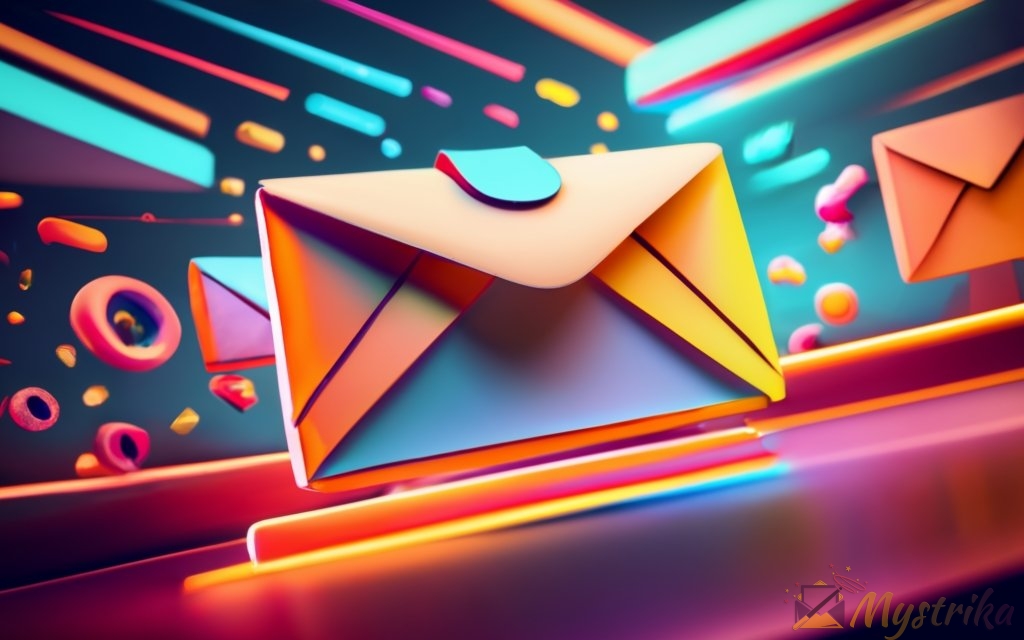
What is an Email Sequence?
An email sequence is a series of automated emails sent in a predefined order to subscribers. Sequences allow you to engage contacts over time with relevant, valuable messaging tailored to their interests and needs.
How Do Email Sequences Work?
Here’s an overview of how email sequencing works:
- Sequences are made up of a set number of emails spaced out over days or weeks.
- Each email has a specific purpose and drives the subscriber closer to a desired outcome, like a purchase.
- Sequences are triggered automatically when the contact takes an action, such as signing up for a newsletter.
- The contact is enrolled in the sequence and receives scheduled emails based on those triggers and opted-in preferences.
- Email copy, offers, and design can be tailored based on known subscriber attributes like demographics, interests, and purchase history.
- Subscribers are automatically removed from the sequence when they complete the desired outcome, like making a purchase.
- Performance metrics are tracked to optimize sequence content and effectiveness over time.
By sending a series of relevant, valuable emails, sequences build engagement and guide subscribers on an automated journey with your brand.
Types of Email Sequences
There are many types of email sequences, each designed to achieve specific marketing and business goals with subscribers.
Welcome Sequences
Welcome sequences introduce new subscribers to your brand. They help get the relationship off on the right foot.
Example welcome sequence emails:
- A thank you and confirmation for signing up
- A quick brand story and overview of your products/services
- Tips for getting the most value out of your offerings
- Satisfaction surveys and requests for feedback
Onboarding Sequences
Onboarding sequences help activate and ramp up new users after sign-up. The goal is to maximize initial experience and retention.
Onboarding sequence emails may cover:
- Confirming account setup and configuration
- Product tutorials, demos, and training
- Requests for reviews and testimonials
- Expansion tips and upsell offers
Re-Engagement Sequences
Re-engagement sequences bring inactive contacts back into the fold. They re-connect with subscribers who haven’t engaged lately through personalized offers.
Re-engagement sequence emails typically:
- Send special offers for reactivating subscribers
- Share new products, features, or content
- Ask for feedback on why engagement dropped
- Offer inbox preferences and opt-out options
Promotional Sequences
Promotional sequences hype upcoming offers, events, and promotions. They build anticipation and drive traffic.
Promotional sequence emails:
- Give sneak peeks of upcoming products or events
- Provide details on flash sales, discounts, and giveaways
- Share promotional partner content and deals
- Send last chance reminders right before the promo ends
Holiday Sequences
Holiday sequences capitalize on seasonal events to boost engagement and sales. They often include limited-time offers.
Example holiday sequence emails:
- Share holiday product guides and gift recommendations
- Promote holiday sales, discounts, and shipping deadlines
- Send holiday greeting emails with branded creative
- Offer post-holiday sales on leftover inventory
Digest Sequences
Digest sequences recap your latest content in recurring roundups. This caters to subscribers with limited attention who may have missed initial emails.
Popular digest sequence editions:
- Top blog posts or downloads from the past month
- New features or products launched recently
- Q&A with company leaders or subject experts
- Roundup of guest articles contributed elsewhere
Now that we’ve covered email sequence basics, let’s look at some tips for creating compelling sequences.
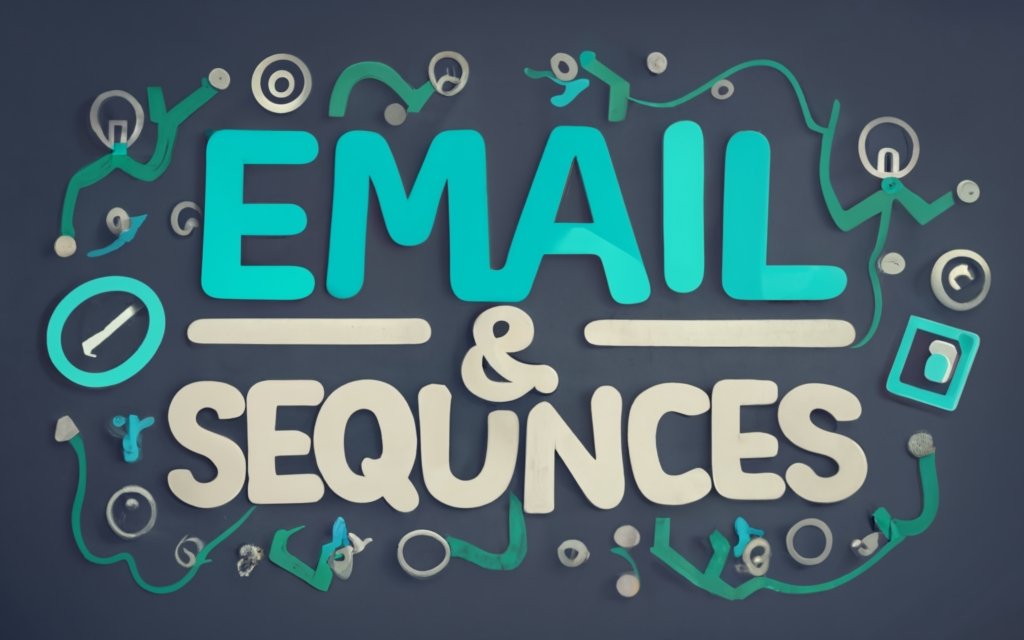
Why Are Sequences Important?
Sequences provide the structured, multi-touch nurturing that modern buyers expect. Let’s explore the many benefits sequences offer and why they are critical to sales and marketing success today.
Benefits of Using Sequences
There are many reasons sequences are important for engaging and converting buyers:
Sequences Nurture Prospects Through the Buyer’s Journey
Today’s buyers demand an educational, consultative sales approach. Sequences allow you to nurture cold prospects by providing relevant value at each stage. You can guide contacts through the awareness, consideration, and decision phases with timely messages.
Sequences Reduce Sales Team Workload
Sales sequences automate manual follow-ups, freeing up reps to focus on hot leads. Reps can spend time personalizing messages rather than starting from scratch with each outreach.
Sequences Increase Relevancy
Sequences send the right message at the right time based on prospect actions and attributes. This tailored, consultative approach boosts engagement.
Sequences Create Momentum
Consistent sequences keep your brand top of mind while building familiarity and trust. This momentum is key to converting prospects.
Sequences Convert Customers
Post-purchase sequences improve conversion of upsells, renewals, and repeat purchases. They also increase overall customer lifetime value.
Sequences Scale Revenue Operations
Trigger-based sequences allow teams to replicate best outreach practices at scale across all prospects and customers.
Simply put, strategic sequencing generates the repetition, relevancy, and momentum required to cut through the noise and drive results in modern revenue operations.
How Sequences Help Convert Prospects and Customers
Beyond the general benefits above, sequences produce results by guiding prospects and customers through these key phases:
Raising Awareness
- Sequences cut through the noise to introduce your brand to cold prospects in a personalized way.
- They share valuable insights tailored to prospect needs to get on their radar.
Building Trust
- Consistent, consultative sequences position your brand as a trusted advisor.
- Highly relevant content and consistent outreach develops familiarity and credibility over time.
Overcoming Objections
- Common questions and hesitations are anticipated and addressed proactively in messages.
- Sequences convince prospects you understand their problems and can provide the best solution.
Creating Urgency
- Timely promotions, discounts, and expiring offers used in sequences create a fear of missing out.
- Countdown clocks, limited-time deals, and high-demand messaging drive conversions.
Delighting Customers
- Post-purchase sequences onboard customers for initial success with the product.
- Additional sequences promote loyalty, cross-sells, upsells, renewals, and brand advocacy.
Executed strategically over time, sequenced multichannel communication guides prospects to become happy, loyal customers at scale.
Now that we’ve covered why sequences matter, let’s look at some best practices for creating killer sequences.
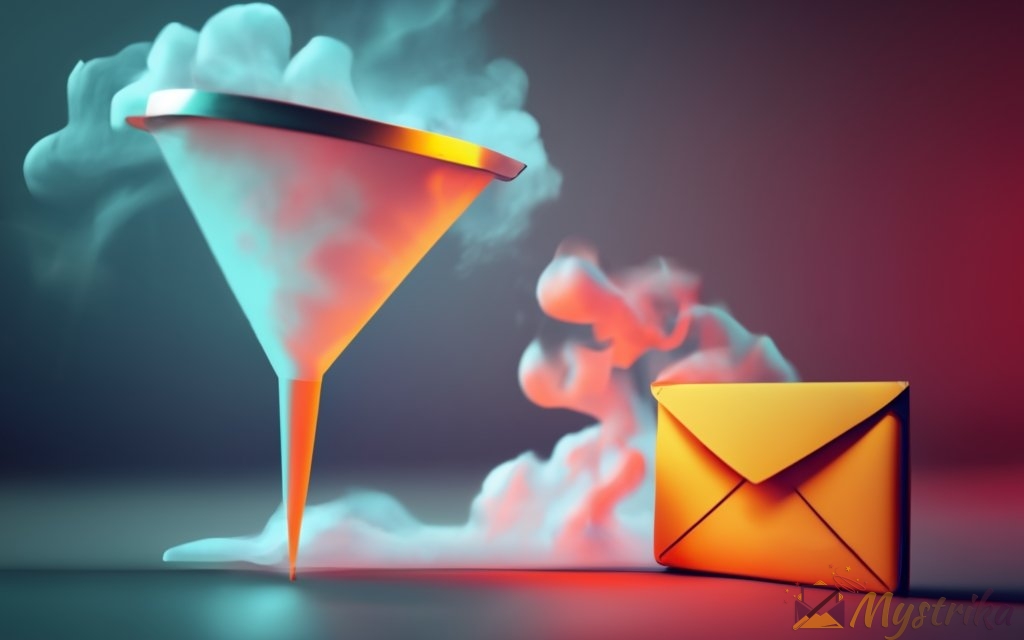
Best Practices for Creating Effective Sequences
Well-executed sequences don’t just happen. They require careful planning, strategic messaging, and constant optimization. Here are some key best practices for creating sequences that engage and convert.
Research Your Audience
Success starts with intimately understanding your ideal buyer personas. Important research areas include:
Demographics: Age, location, gender, income level, education, marital status, etc.
Psychographics: Values, interests, lifestyle, personality, beliefs, etc.
Problems: Their biggest challenges, pains, and needs.
Solutions: How you can alleviate their struggles.
Objections: Why they may hesitate to purchase or engage.
Motivators: Desired outcomes and goals you can help them achieve.
Communication: Preferred channels, frequency, style, etc.
This buyer persona research will ensure your sequences speak directly to your audience in a relevant, compelling way.
Set Clear Goals
Every sequence needs a singular, well-defined goal aligned to your sales methodology.
Common sequence goals include:
- Book discovery calls with cold prospects
- Position your brand as a thought leader
- Generate free trial sign-ups
- Convince prospects to schedule demos
- Secure customer referrals and testimonials
- Increase renewals and upsells
With a clear goal defined, you can then build sequences using messaging and offers tailored to achieving it. Aligning sequences to goals also allows you to accurately measure effectiveness.
Personalize Messaging
Personalized sequences outperform generic outreach by leaps and bounds. Use data and insights collected on prospects to tailor messaging:
Names: Address contacts by first name.
Industry: Reference their company type or vertical.
Location: Mention regional offices and local events.
Role: Speak to their core responsibilities and challenges.
Actions: Follow up on things they’ve engaged with.
Pain points: Sympathize with their struggles.
Solutions: Show how you can specifically help them.
Personalization makes sequences feel like individual conversations at scale, boosting relevance and responses.
Choose the Right Channel Mix
Prospects engage best with their preferred contact channels and styles. Your sequences should leverage a strategic mix, which may include:
Email: The cornerstone channel with engagement tracking.
Calls: Higher-touch and better for complex messaging.
Social: Great for relationship-building at enterprise organizations.
Text: Provides another avenue for short, urgent touches.
Direct mail: Higher-cost but great for personalization and creativity.
Map out your omnichannel sequences based on research into how your personas like to be engaged.
Leverage Multi-Channel Sequences
The most effective sequences combine multiple channels to increase relevancy and cut through the noise.
For example, a sales sequence might be:
Touch 1: Personalized cold email
Touch 2: Follow-up call to confirm email receipt
Touch 3: LinkedIn connection request with note
Touch 4: Direct mail postcard with sample offer
Touch 5: Email with gated content aligned to their needs
Touch 6: Expiring discount or trial offer email
This strategic use of channels gives prospects multiple opportunities to engage in ways comfortable for them.
Optimize Sequence Length
The ideal sequence length will vary based on factors like your sales cycle, customer lifetime value, and product complexity.
As a general rule:
Prospecting: 4 – 6 shorter touches over 2+ weeks
Lead nurturing: 6 – 12 more in-depth touches over 6+ weeks
Customer win-back: 3 – 5 brief, promotional touches over 2 – 4 weeks
Err on the side of more touches for higher-value, longer-cycle deals. But also test to determine ideal frequency and stop points.
Set the Right Cadence
In addition to length, cadence constitutes how frequently you space out touches. This impacts perceived relevancy.
For prospecting, 2 – 4 days between cold outreach is often most effective.
For existing contacts, 5 – 7 days may be better to avoid overwhelming prospects.
Again, test different cadences to find the sweet spot based on response patterns. Automation tools allow this level of optimization.
Continuously Test and Optimize
Start with well-researched guesstimates for your sequences, but never get complacent. Leverage data to constantly refine and improve performance.
Important metrics to track include:
- Open and click-through rates
- Unsubscribe and complaint rates
- Time-to-first-response
- Relationship between sequence performance and revenue
Use A/B testing tools to experiment with different:
- Email copy, offers, and creativity
- Sequence lengths and send cadences
- Subject lines and preheaders
- Calls-to-action and landing pages
This process of continuous optimization is key to engaging your prospects and customers over the long haul.
Give Prospects an Easy “Out”
Despite your best efforts, some prospects will not resonate with your sequences. Always provide clear opt-out instructions in each email to respect their preferences.
Segment contacts based on engagement levels. Remove unengaged subscribers from sequences to avoid turning them off completely to your brand.
Now let’s look at some examples of effective email and sales sequences from leading companies.
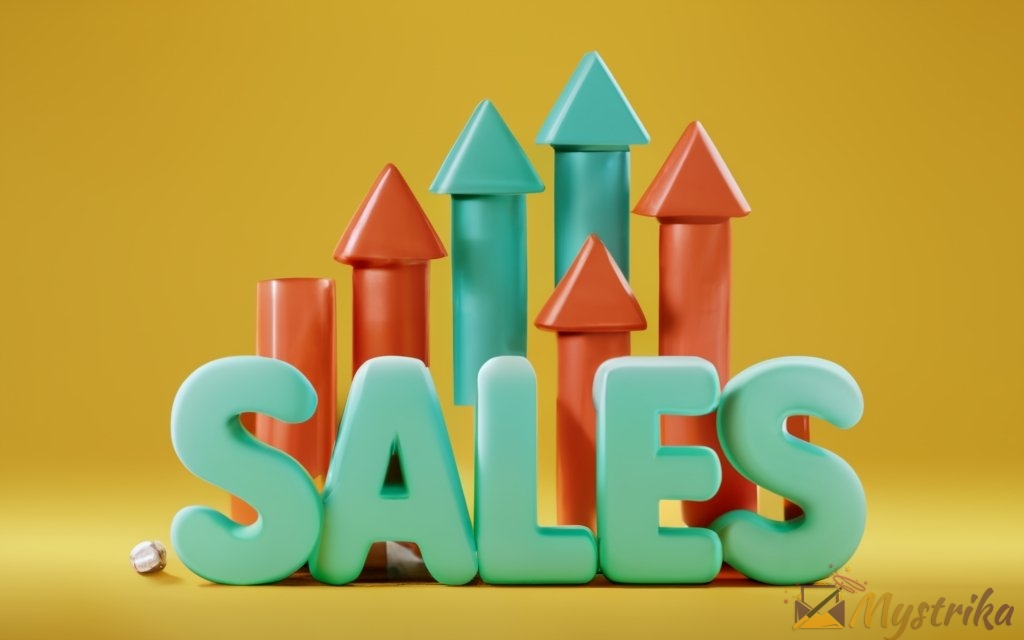
Sales Sequence Strategies and Examples
Well-executed sales sequences nurture prospects over time through personalized, relevant outreach. Let’s explore some of the most common types of sales sequences and examples for sequencing success.
Cold Email Prospecting Sequence
Cold prospecting sequences aim to break the ice with completely unengaged leads. The goal is sparking initial interest and ultimately getting a discovery call booked.
Here is an example cold prospecting sequence:
Touch 1: Initial cold email introduces your brand and piques interest. Focuses on showcasing expertise around their pain points.
Touch 2: Follow-up call confirms email receipt and offers to continue the conversation. Voicemail left if no answer.
Touch 3: LinkedIn connection request with short personalized note referencing the call.
Touch 4: Direct mail postcard with eye-catching creative and strong CTA teasing gated content.
Touch 5: Email shares gated content aligned to their needs and challenges. CTA to book a call.
Touch 6: Urgent email with scarcity element, like limited-time discount or exclusive trial offer to spur action.
Effective cold prospecting sequences create value, establish authority, and gain trust over multiple personalized touches before proposing next steps.
Lead Nurture Sequence
Lead nurture sequences focus on educating and familiarizing prospects actively researching solutions for their problem.
A sample nurture sequence:
Touch 1: Welcome email when the lead opts in to download a relevant piece of gated content.
Touch 2: Follow-up email shares links to additional related resources based on the content they consumed.
Touch 3: Educational email with tips relevant to their role and industry for excelling with solutions like yours.
Touch 4: Case study email showing how another company of similar size in their industry benefited from your solution.
Touch 5: Invite to an educational webinar providing value around overcoming common challenges they face.
Touch 6: Trial offer email allowing them to experience your solution’s benefits firsthand.
Nurture sequences create maximum mindshare with leads comparison shopping solutions through consistent value.
Customer Re-Engagement Sequence
Re-engagement sales sequences target existing contacts that have gone cold to re-start stalled opportunities.
A sample re-engagement playbook:
Touch 1: Initial email checking in and referencing past interactions and your solutions discussed.
Touch 2: Follow-up call recapping past conversations and probing for any changes or new challenges you can help address.
Touch 3: Event invite to an industry conference, seminar, or virtual event you’ll be participating in.
Touch 4: New feature release email touting a capability that directly aligns with a pain point they face.
Touch 5: Free consultation offer presenting an opportunity to re-explore their needs and how you can address them.
Touch 6: Case study or testimonial email with quotes from customers at companies just like theirs highlighting benefits.
Re-activation sequences use valuable content and promotional offers to nurture disengaged prospects back into the sales funnel.
Upsell / Cross-sell Sequence
Leveraging existing customers for upsells and cross-sells is cheaper than acquiring new ones. Sequences help uncover these expansion opportunities.
A sample upsell / cross-sell playbook:
Touch 1: Email touting a new add-on product that complements what they’re using and enhances value.
Touch 2: Call discussing upcoming contract renewal and additional modules that align to future needs.
Touch 3: Email offering free trials of a premium tool to showcase untapped capabilities.
Touch 4: Success plan email mapping different tiers against additional features, support, and services they unlock.
Touch 5: Call to review upcoming major initiatives for the year and how expanded offerings can accelerate them.
Touch 6: Expiring coupon code for compelling discount on add-ons aligning to those initiatives and goals.
Upsell / cross-sell sequences spotlight opportunities to expand within accounts and compound return on investment.
The Power of Sequences: A HubSpot Case Study
To show just how powerful properly nurturing and sequencing contacts can be, consider this remarkable case study from HubSpot:
- HubSpot purchased a list of contacts interested in marketing automation and began nurturing them.
- On Day 1, they sent an introductory email through a lead nurture sequence.
- By Day 90, nurtured contacts were 70% more likely than non-nurtured contacts to convert to a customer.
- What’s more, nurtured contacts brought in 31% more revenue on average than non-nurtured contacts did.
This example demonstrates the sheer potential of setting up and optimizing multi-touch sales sequences. The ROI can be spectacular.
In summary, sequencing outreach in a consultative, consistent way over time can work wonders in engaging and converting modern buyers. The few examples above illustrate common sequence strategies, but the possibilities are endless.
With a little creativity and discipline, you can build sequences that nurture any prospect type into loyal, high-value customers.
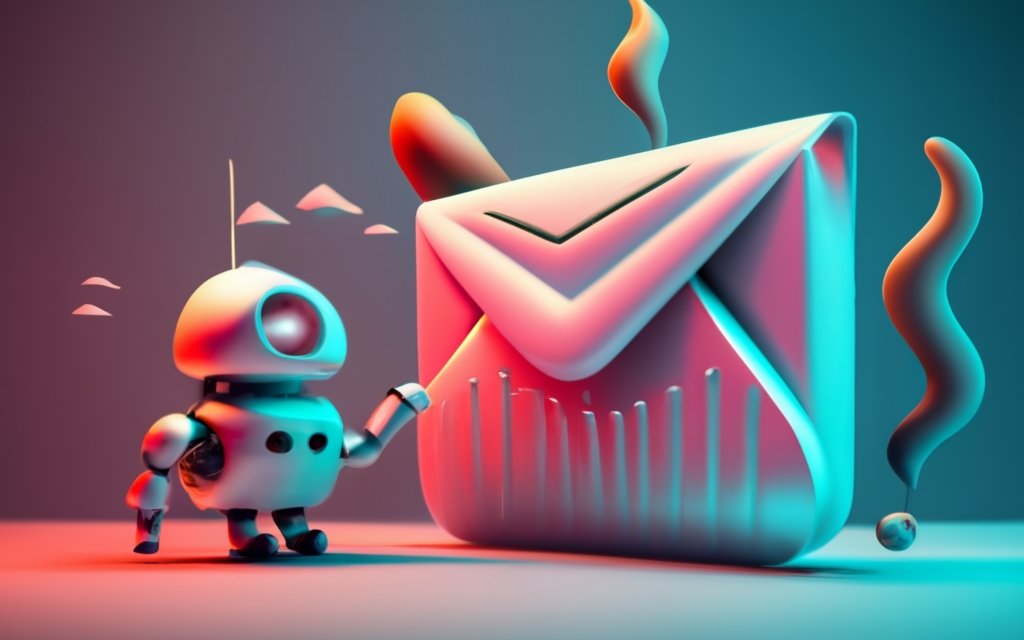
Email Sequence Strategies and Examples
Let’s explore some of the most common email sequence strategies and examples to engage subscribers and achieve marketing goals.
Welcome Sequence
Welcome sequences introduce recipients to your brand and offerings when they first subscribe. The goal is setting the foundation for an impactful relationship.
Here’s an example simple 3-email welcome playbook:
Email #1: Thank you and welcome email confirming subscription. Quick brand story and overview of products/services.
Email #2: Tips to get the most value from your offerings and next steps for new subscribers. Links to popular content areas.
Email #3: Satisfaction survey to capture initial feedback on their experience so far. Request for testimonial if satisfied.
Effective welcome sequences quickly establish value while conveying brand differentiation in a warm, consultative way.
Onboarding Sequence
Onboarding sequences help activate and ramp up users after sign-up. They aim to quickly make new users self-sufficient and successful.
A sample onboarding sequence:
Email #1: Confirmation of account setup and configuration. Quick start guide and tutorial.
Email #2: Overview of key features and capabilities. Videos demonstrating how to use the product.
Email #3: Tips for getting the most value from overlooked features based on usage data.
Email #4: Reminder to leave a review showcasing successes so far. Links to submit reviews.
Email #5: Expansion tips sprinkled in, like using higher tiers of service, additional modules, or premium tools.
Onboarding sequences accelerate new user productivity, retention, and expansion in the critical first weeks post-sign-up.
Cart Abandonment Sequence
Abandoned cart sequences encourage shoppers to complete purchases left unfinished. They gently remind customers about items left behind.
Here’s a sample 3-touch abandoned cart playbook:
Email #1: Cart abandonment notification email showing product images, name, and pricing left in cart.
Email #2: Follow-up reminder email also showing products in cart. Time-sensitive discount offer included to incentivize completing purchase.
Email #3: Final reminder highlighting expiration date of current discounts or promotions that will be lost if they don’t check out soon.
Abandoned cart sequences are hugely effective at driving incremental revenue from slipping purchases. Even modest recovery rates yield big results.
Customer Win-Back Sequence
Win-back sequences target inactive or former customers who have churned. Their goal is reactivating disengaged subscribers with compelling offers.
Here’s a sample 3-email customer reactivation sequence:
Email #1: Check-in email to former customer asking how they’ve been and if they’d be interested in resubscribing.
Email #2: Share details on new features, content, or offerings added since they cancelled that bring value.
Email #3: Extend a special discount, trial, or promo specifically for former customers looking to give you another try.
Winning back lost customers with a promotion is far cheaper than acquiring brand new ones. Win-back sequences help maximize retention and lifetime value.
Holiday-Themed Sequence
Holiday sequences leverage seasonal events to boost engagement and sales. Festive, time-sensitive offers incentivize purchases.
Here’s an example 4-email holiday sequence structure:
Email #1: Holiday shopping kick-off email with deals, gift guides, and product recommendations for the season.
Email #2: Cyber week promotion email with time-limited discounts in the run-up to peak holiday shopping days.
Email #3: Last chance email right before end of holiday promotions with hard deadlines for discounts and delivery.
Email #4: Post-holiday email recapping seasonal successes and teasing next action like year-end sales.
Seasonal sequences help maximize results from high-demand holiday shopping without significant creative effort each year.
Evergreen Educational Sequence
Evergreen autoresponder sequences deliver a regular cadence of valuable educational content to engaged subscribers.
Here’s a sample educational sequence structure:
Email #1: Industry guide or tips providing actionable best practices for excelling at a common task.
Email #2: Q&A with internal subject matter experts addressing frequently asked questions.
Email #3: Case study/testimonial email with clients discussing challenges and successes.
Email #4: Monthly recap of top-performing blog posts and most downloaded pieces of gated content.
Ongoing educational sequences help continually add value for subscribers in a scalable, automated way over the long term.
Drip Campaign Case Study: Moz
To illustrate just how valuable setting up marketing automation can be, consider this remarkable case study from SEO company Moz:
- Moz created a multi-touch onboarding sequence for a new product launch.
- On Day 1, an orientation email explained core concepts and guided users through setup.
- Drip sequence emails followed over 25 days educating users on key features.
- Compared to no sequence, the automated onboarding emails saw 96% more highly engaged users.
- Moz ultimately attributed an extra $1 million in annual recurring revenue to this onboarding sequence alone.
This example demonstrates the immense potential of sequenced, automated email. When executed strategically, the ROI can be game-changing.
In summary, thoughtfully nurturing subscribers via relevant, valuable email sequences over time is a proven path to maximizing customer engagement, retention, and lifetime value.
The sequence examples and strategies above offer templates to get you started sequencing your audience for success. But don’t be afraid to test and iterate to determine the ideal mix that resonates with your unique subscribers.
With a little planning and creativity, you can build sequences that captivate subscribers and achieve key business outcomes through email marketing automation.
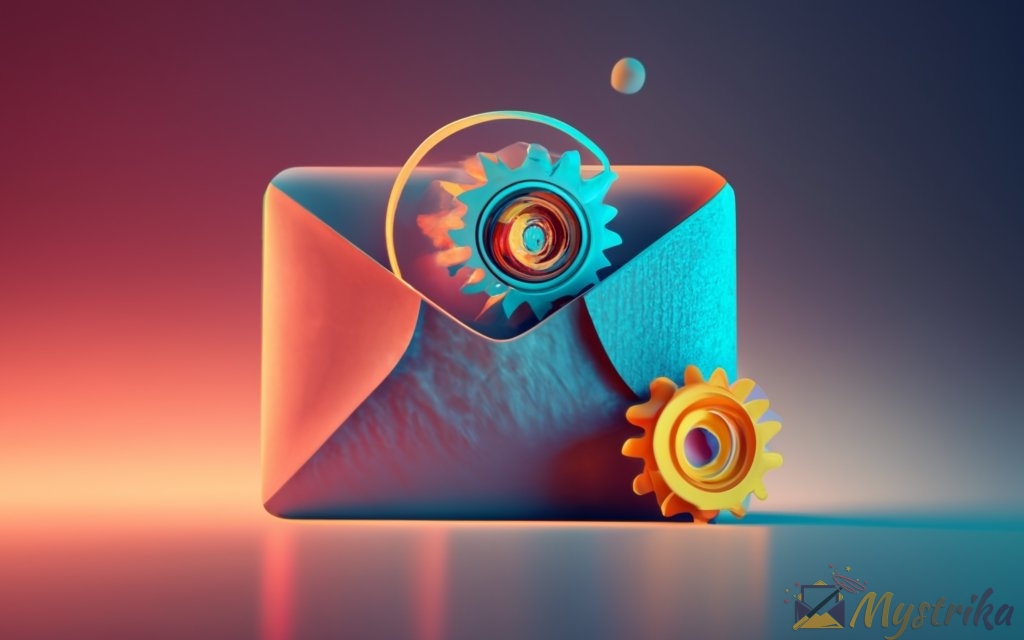
How to Create a Sales Sequence
Now that we’ve covered sales sequence strategies, let’s walk through the process for building effective sequences to nurture and convert more prospects.
Steps for Building a Sales Sequence
Follow these key steps to plan and execute winning sales sequences:
Set Goals
Begin by defining the purpose of your sequence. Common goals include:
- Book more discovery calls
- Generate more demos
- Create opportunities in dormant accounts
- Secure customer referrals
With clear goals set, you can reverse engineer the right strategy and messaging.
Map the Buyer’s Journey
Next, map out the typical buyer’s journey for your persona from lead to loyal customer.
- Identify key phases, questions, and needs at each stage.
- Pinpoint where in the journey your sequence will engage prospects.
- Determine the desired next steps for prospects after the sequence.
This mapping ensures your messages align with the prospect’s journey.
Build Buyer Personas
Get crystal clear on the target persona for your sequence by researching demographics, psychographics, challenges, motivations, and contact preferences.
Chart the Sequence
Plot the prescribed number of touches for your sales cycle, channel mix, and cadence based on personas.
Stick to 4 – 8 touches over 1 – 2 months for most sequences. But test to find your ideal combination for conversions.
Draft Initial Messaging
For each sequence touch, create draft messages tailored to the persona and their expected mindset when receiving the communication.
- Focus on education, value, and relevance early before introducing your solution.
- Make final touches promotional with time-bound offers to spur action.
Choose Channels
Incorporate the channels your personas prefer into your sequence based on research – email, phone, social, direct mail, etc.
Multi-channel sequences outperform email-only cadences.
Integrate With CRM
Use workflows in your sales engagement software to enroll prospects when they take specified actions.
Integrate with your CRM to track prospect engagement throughout sequences and update records automatically.
Launch and Test
Start small by launching your first sequence to test audiences. Measure open rates, reply rates, and prospect velocity through the funnel.
Refine through A/B testing of content, offers, timing, and channels.
Rinse and repeat this process to build sequences that maximize prospect conversions.
Sales Sequence Software and Tools
Specialized tools help streamline building and managing effective sales sequences. Here are top sequence software solutions:
- CRM Software: Most CRM systems like Salesforce, HubSpot, and Zoho CRM offer workflow automation for sequences.
- Sales Engagement Platforms: Prospecting and outreach focused tools like Outreach and SalesLoft offer sequence building.
- Marketing Automation Software: Email-centric tools like Mailchimp, Drip, and Customer.io allow automation sequences.
- Lead Capture Tools: Landing page and gated content tools like Leadpages and Unbounce enable sequences on form submission.
- Email Service Providers: ESPs like Mailgun, SendGrid, and SparkPost can power automated sequence emails.
Choose solutions that align to your sales process, existing tech stack, and teams’ needs.
Integrate Sequences with Your CRM
To maximize the impact of sequences, integrate them with your CRM using built-in native functionality or workflows.
This allows you to:
- Enroll prospects in sequences automatically based on CRM data and events.
- Track prospect engagement with sequence emails and update CRM records accordingly.
- Create CRM tasks and activities generated from the sequences.
- Segment and create lists of sequence participants.
- Report on sequence effectiveness in converting and progressing CRM leads.
Bi-directional CRM integration helps sales teams execute and optimize complex sequences at scale.
Monitor and Optimize Sequence Performance
Build reporting dashboards in your platforms to continuously monitor sequence performance.
Important metrics to track include:
- Open, click, and reply rates
- Sales velocity through the funnel
- Win/loss rates for sequence participants vs. non-participants
- Opt-out and unsubscribe rates
Use this data to refine your sequences and maximize prospect conversion,pipeline velocity, and revenue generation over time.
Ongoing optimization is key to continual sales performance improvement through sequences.
With the right tools and diligent follow-through, strategically constructed sales sequences will transform prospect engagement and accelerate conversions.
Now let’s explore how to implement impactful email sequences.
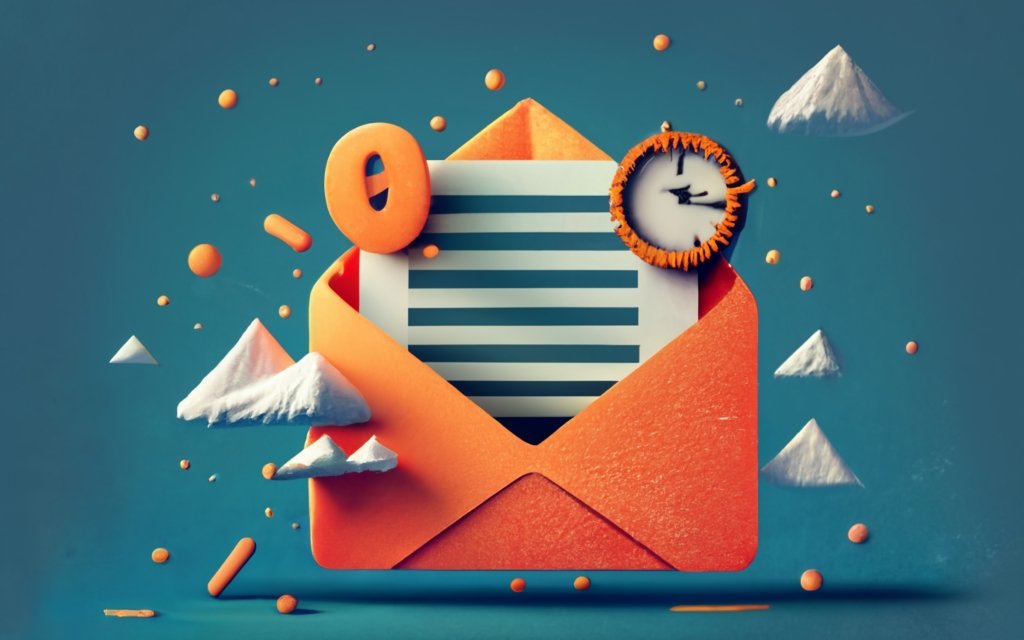
How to Create an Email Sequence
Let’s explore the process for building and executing effective email sequences that drive results.
Steps for Creating a Successful Email Sequence
Follow these best practices for planning and launching high-converting email sequences:
Identify Your Goal
Start by defining the purpose of your sequence. Common goals include:
- Welcome and onboard new subscribers
- Encourage product purchases
- Promote an upcoming sale or event
- Win back inactive subscribers
- Generate customer referrals
With a clear goal in mind, you can strategize the right approach.
Map the Subscriber Lifecycle
Next, map out your typical customer journey from prospect to loyal brand advocate.
- Pinpoint where in that journey your sequence will engage subscribers.
- Determine the desired next step after the sequence concludes.
This mapping ensures you reach subscribers at the right time with relevant messaging.
Build Subscriber Personas
Get very specific on the target persona for your sequence by researching demographics, psychographics, challenges, motivations, preferred channels and content types.
Plan Your Emails
Decide how many emails are needed to move subscribers towards your goal.
Balance thoroughness with avoiding overwhelming recipients. 3-5 emails usually suffices.
Map your proposed sequence and schedule based on buyer journey and lifecycle stage.
Draft Initial Content
For each email, create draft copy tailored to the persona and their mindset when receiving the message.
- Focus on education, entertainment, and value early before any promotional content.
- Make final email(s) promotional with urgency or exclusivity to motivate action.
Design and Test
Create email templates optimized for engagement across devices, testing elements like subject lines, calls-to-action, and design.
Automate Delivery
Use your ESP’s automation tools to set up triggers and schedule delivery of each sequence email when activated.
Integrate With Your CRM
Connect your email marketing platform to your CRM to track subscriber engagement and update associated records automatically.
Monitor Results
Review email analytics to continuously optimize your sequences for open rates, click-throughs, conversion rates, and revenue impact.
Refine your sequences through testing content, cadence, timing, and design iterations.
Email Service Providers
Purpose-built ESP platforms streamline creating, sending, and automating email sequences. Top solutions include:
- Mailchimp: The pioneer of email marketing automation with intuitive visual campaign builder.
- Drip: Focused specifically on Ecommerce automation like cart sequences.
- Constant Contact: Long-time ESP with drag-and-drop sequence builder.
- SendinBlue: Powerful automation suitable for transactional and marketing email.
- Omnisend: ESP built exclusively for ecommerce abandoned cart and onboarding sequences.
- Customer.io: Event and behavior-based automation great for lifecycle sequences.
Evaluate ESPs based on your subscriber size, email volume, automation needs, and technical expertise.
Email Automation Tools
In addition to full-featured ESP platforms above, specialized email automation tools can also execute sequences:
- Mailshake: Lightweight Chrome plug-in perfect for small teams.
- Woodpecker: Chrome extension with visual automation builder.
- MixMax: Gmail-based sequences and cadences with CRM integrations.
- Reply: Sequences based on responses and email engagement.
These streamlined automation options may better suit those needing simple sequencing capabilities without advanced ESP features.
Maximizing Deliverability
When deploying email sequences, it’s critical to maintain inbox delivery through proper list hygiene and sending practices like:
- Permission-based opt-in data capture
- Confirmation of opt-in with double opt-in
- Honoring unsubscribe requests immediately
- List cleansing to remove bad email addresses
- Habitual inbox monitoring for spam complaints
- Careful send pacing to avoid volume bursts
- Scalable infrastructure including proper IP warming
- Domain authentication via SPF, DKIM, and DMARC
- Monitoring of reputation with major ISPs
Healthy list quality and deliverability is imperative for successful sequencing given the volume of emails.
Continuously Test and Iterate
Treat your first sequence as a Minimum Viable Product to be refined and optimized over time. Use opens, click-throughs, and revenue data to guide improvements.
Experiment with:
- Email content and messaging
- Number of sequence emails
- Cadence between emails
- Timing of entire sequence
- Subject lines and headline copy
- Layout, visuals, and creativity
- Calls-to-action and landing pages
Relentless testing and data-driven iteration is key to maximizing the ROI from email sequences long-term.
In summary, thoughtfully crafted and automated email sequences allow you to engage subscribers in a relevant, scalable way over time to achieve critical business outcomes.
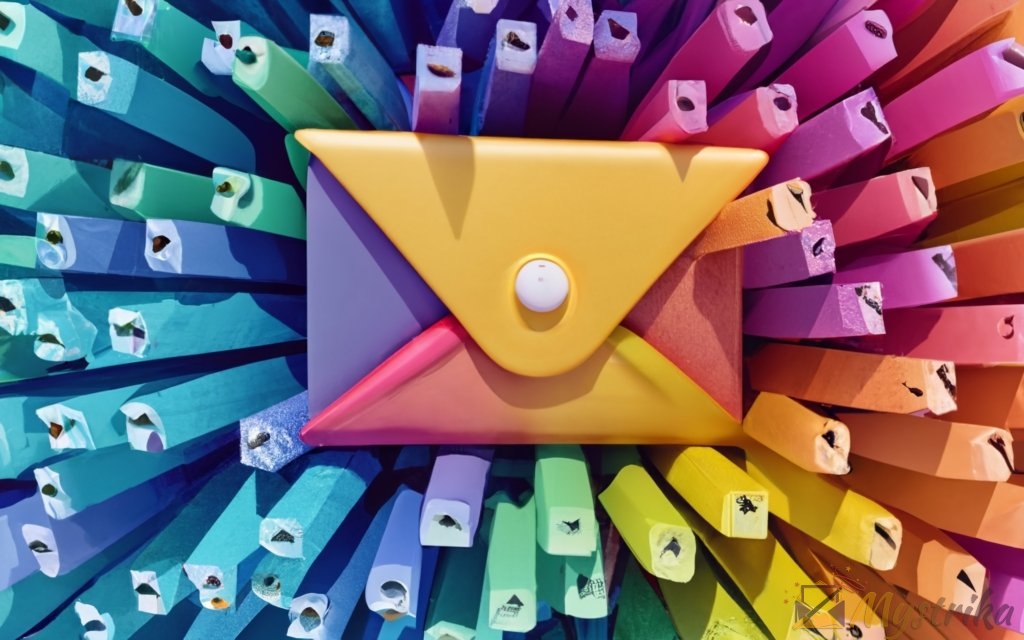
Measuring the Results of Sequences
The only thing better than well-executed sequences is continuously improved sequences. Here are tips for tracking key metrics and optimizing performance.
Important Metrics to Track
Robust analytics are crucial for maximizing the impact of both sales and email sequences. Be sure to monitor:
Engagement Rates
Engagement shows who is genuinely interested versus glossing over your outreach. For emails, open and click-through rates are key. For sales sequences, reply rates matter most.
Ideally, monitor engagement by sequence, persona, industry, geo, etc. to find patterns.
Sales Velocity
Sequence participants should progress through the funnel faster than those not enrolled.
Track deal stage movement, average sales cycle length, and win rates for sequence recipients compared to non-recipients.
Revenue Impact
Ultimately, sequences should directly contribute to pipeline growth and closed revenue relative to costs.
Report on deals originated or influenced by sequences vs. other channels.
Unsubscribe/Complaint Rates
If recipients are consistently annoyed, offended, or overwhelmed by your sequences, your approach needs refinement.
Keep a close eye on opt-outs, spam reports, and complaints.
List Growth/Churn
Sequence success depends on having a healthy, growing audience to sequence.
Monitor subscriber acquisition and turnover rates to ensure your lists are expanding vs. contracting.
Using Data to Optimize
Leverage your sequence analytics to continually refine and improve performance.
Identify Trends
Look for patterns in engagement and revenue data you can capitalize on.
Does a certain persona or industry overindex on revenue? Is there a particularly effective lead source or campaign?
Dig into why top segments respond better and adapt your approach accordingly.
Isolate Problem Areas
Pinpoint where subscribers disengage from your sequences to uncover weak points.
Do you see excessive drop-off after a certain sequence email or sales call? Are subscribers in specific segments unsubscribing early?
Address problematic sequence content areas negatively impacting conversions.
Personalize Intelligently
Use CRM integration and sequence data to segment subscribers and tailor messaging based on interests and engagement.
Place hot leads in accelerated nurture tracks while giving colder leads lighter education-focused streams.
Match the pace and content of your sequences to observed subscriber attributes and behaviors.
Refine and Expand
Double down on your best-performing sequences while phasing out poor performers.
Constantly develop new sequences to cover additional scenarios like re-engagement, upsell, seasonality, etc.
A/B Testing Sequences
To maximize performance, sequences must be continually tested and optimized.
Use A/B testing tools to experiment with different:
Sequence Lengths
Try shorter cycles for cold prospecting and longer nurture sequences for complex products. Measure impact on deal rates.
Send Cadences
Speed up or slow down touch frequency based on deal stage urgency and engagement data.
Content Mix
Test educational vs. promotional content blends to balance value and calls to action effectively.
Subject Lines
Evaluate open rates for curiosity-sparking questions vs. value-focused subject lines.
Offers
Experiment with discounts, free trials, gifts, and exclusivity to determine what best compels desired actions.
Automation Rules
Refine sequence enrollment criteria and unsubscribe logic to pinpoint ideal participants.
Ruthless split testing takes guesswork out of optimizing sequences. Let data determine what resonates most with your unique audience.
In summary, diligent monitoring, analysis, and refinement through testing are integral to continual sales sequence improvement and peak performance over time.

Conclusion and Next Steps
Sequences provide the structured, automated nurturing that modern buyers expect throughout their journey. By implementing some of the strategies covered, you can start sequencing your way to sales and marketing success.
Key Takeaways
A few core lessons to remember:
- Sequences generate the repetition and relevancy required to stand out to buyers today.
- Proper sequencing can significantly increase deal conversion rates and customer lifetime value.
- Match sequence messaging and offers to where contacts are in their buyer’s journey.
- Multi-channel sequences perform better than email-only campaigns.
- 4 – 8 touches over 1 – 2 months is ideal for most business scenarios.
- Personalize every sequence touchpoint using available data and insights.
- Continuously track performance and optimize based on open rates, revenue impact, and other KPIs.
- There are endless sequence types and variations; creativity and testing are key.
Advice for Getting Started
Ready to start sequencing your outreach? Here are some tips:
- Begin with high-value scenarios like customer win-back and abandoned cart.
- Use native CRM functionality or add a specialized sequencing tool.
- Don’t overcomplicate early sequences – start with 3-5 simple touches.
- Identify important trigger events like downloads, site visits, etc. to initiate sequences.
- Review analytics frequently and refine based on response patterns.
- Expand sequencing over time across more scenarios, audiences, and channels.
- Don’t forget to track ROI and ensure your sequences have measurable business impact.
Additional Resources
For more sequence inspiration and strategies:
- Single Email or Series? How to Choose Effective Automation
- 4 Secrets of High-Converting Nurture Emails
- 9 Effective Lead Nurture Email Campaigns
- 8 Sales Cadence Best Practices
- The Ultimate Guide to Sales Prospecting
Done right, sequences can transform your ability to engage, nurture, convert, and retain contacts over time. Pick one or two high-value scenarios to start sequencing today and expand from there.
With a strategic mix of education, promotion, and urgency delivered consistently across channels, your sequences will boost results and grow your business.
What key takeaway resonated most with you today? Let us know in the comments!

